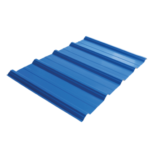In roofing, three crucial elements work harmoniously to create a durable and energy-efficient structure: the roof system, waterproofing membrane, and house insulation. These components form the backbone of a well-protected and energy-efficient home. In this article, we will delve into the significance of each and how they contribute to the overall health of your roof.
1. Roof System: The First Line of Defense
The roof system is your home’s first defence against the elements. It shields your house from rain, snow, wind, and UV radiation. A well-designed roof system comprises multiple layers, including the roof deck, underlayment, and outer roofing material. The type of roofing material you choose significantly determines your roof’s longevity and resilience.
Modern roofing materials, such as asphalt shingles, metal roofing, or clay tiles, are engineered to provide excellent protection while enhancing the aesthetic appeal of your home. Regular maintenance and inspections are vital in extending the life of your roof system. If you spot damaged shingles, sagging areas, or leaks, it’s crucial to address these issues promptly to prevent further damage to the underlying structure.
2. Waterproofing Membrane: Keeping Water at Bay
Waterproofing is an essential aspect of maintaining a healthy roof. Regardless of your roofing material, it’s necessary to have a waterproofing membrane installed beneath the outer layer. This membrane is an additional barrier against water infiltration and helps prevent leaks.
Waterproofing membranes are typically made of asphalt, rubber, or synthetic polymers. They are installed on the roof deck before the underlayment and outer roofing material are added. This layer not only prevents water from penetrating your roof but also safeguards your home’s structural integrity by inhibiting mould and rot growth.
3. House Insulation: Energy Efficiency and Comfort
House insulation may not be visible from the outside, but its role in maintaining an energy-efficient and comfortable home is indispensable. Proper insulation helps regulate indoor temperature, reduces energy consumption, and minimises utility bills.
Insulation is commonly installed in the attic, walls, and sometimes the roof. It traps heat during the winter and keeps your home cool in the summer. This temperature control enhances your comfort and reduces the strain on your HVAC system, leading to long-term energy savings.
Furthermore, house insulation can help prevent ice dams on your roof during the winter. These ice dams can damage your roof system and lead to leaks. Adequate insulation in your attic will maintain a consistent temperature on your roof, preventing snow from melting unevenly and forming ice dams.
In conclusion, a secure roof system, waterproofing membrane, and proper house insulation ensure your home’s structural integrity and energy efficiency. Regular inspections and maintenance of your roof system, combined with the installation of a waterproofing membrane and efficient insulation, will save you money on utility bills and extend the life of your roof. As you consider roofing projects or renovations, remember that investing in these elements will pay off in the long run, both in terms of your home’s protection and your wallet.







